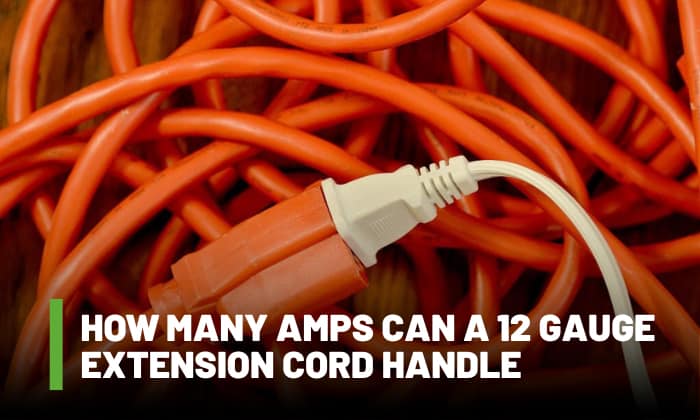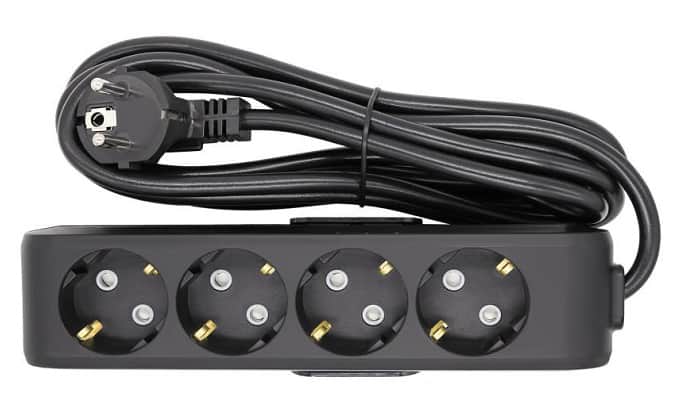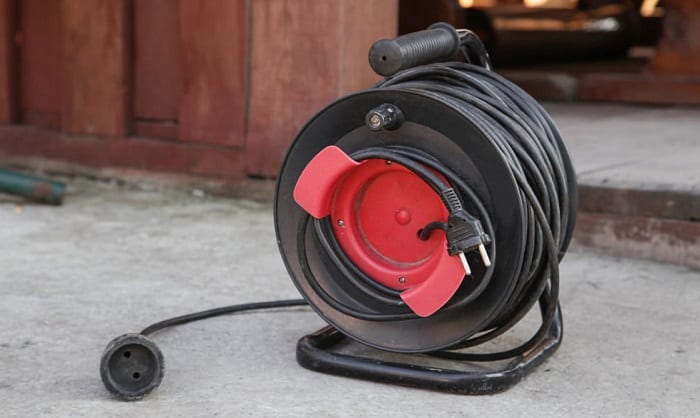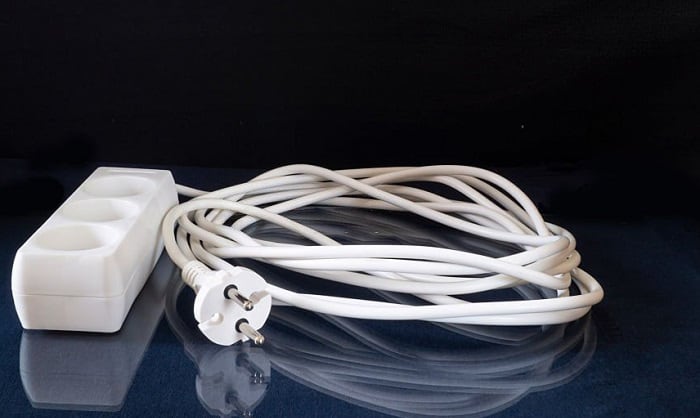The 12 gauge extension cable is one of the most regularly utilized cords in an average household. Understanding its electrical rating can assist you in determining what device to pair with this cord.
So the question is, “how many amps can a 12 gauge extension cord handle?”
It can typically handle 20 amps of current. However, the length of the application might affect its rating due to some factors that I will discuss below.
Table of Contents
What is the Amperage Capacity of a 12 Gauge Extension Cord?
In general, the right extension cord rating is necessary for every application. This way, you can avoid starving your devices of electricity, causing them to malfunction or incur damage. Furthermore, an undersized extension cord may overheat, posing an electrical hazard.
As said above, 12 gauge extension cord amps are usually up to 20 amps. This rating is typically attached to the cord’s label, along with the other electrical measurements and features.
However, determining the electrical rating may be difficult if you have an old extension cable with no associated label. As a result, it will be tough to know what type of appliances can be used with it.
In this scenario, the extension cord gauge chart like the one below may come in handy. At the same time, I will also show you how you can calculate these electrical ratings using a simple formula.
Amps and Watts at Different Volts
| Size of Extension Cord (25-50 ft length) | Amperage Rating (amps) | Wattage Rating at 110v (watts) | Wattage Rating at 220v (watts) |
| 16 AWG | Up to 13 amps | 1,430 watts | 2,860 watts |
| 14 AWG | Up to 15 amps | 1,650 watts | 3,300 watts |
| 12 AWG | Up to 20 amps | 2,200 watts | 4,400 watts |
| 10 AWG | Up to 20 amps | 2,200 watts | 4,400 watts |
How to Calculate the Ratings of an Extension Cord?
If you’re not satisfied with the wattage chart above, I’ll also show you how to calculate the estimated wattage of a cord. To do this, you must conduct some basic calculations, detailed below.
- The first step in determining how many watts an extension has is to identify its amperage rating. In most cases, this is indicated on the label or tag.
- If the amperage is not there, you can acquire its AWG and length and check the extension cord length amperage size chart Usually, the cable insulation will have its specification written, such as 12/3 (which means 12 gauge, 3 wires).
Alternatively, you can use a caliper to measure the wire diameter. 12 gauge is about 2.05 mm, for instance.
- Next, decide which circuit you wish to connect your extension cord to. Then, for an extension cord calculator, use the formula Watts = Amps x Volts.
For example, suppose you have a 12 gauge 20 amp extension cord that you wish to plug into a 110v circuit. 20 amps multiplied by 110 volts equals a power rating of 2,200 watts. This means you can use devices with a total power of 2,200 watts for this cable.
Extension Cord Amperage Rating Depending on Its Length
Another thing to consider is the extension cord’s length, since it may affect its amperage rating. This is because a longer cord has a higher resistance, making it difficult for the current to travel. In this case, it could cause a voltage drop, resulting in lower power outputs.
As a result, the amperage rating of same-size extension cables may differ if they have different lengths. For example, a 14 gauge extension cord has a rating of 15 amps at 50 feet and only 7 amps at 150 feet.
If you don’t know what the rating of your extension cord is, the chart below may come in handy. You can use it as a guideline.
| Extension cord size | Amperage rating per length of extension cord | ||
| 25 ft. to 50 ft. | 100 ft. | 150 ft. | |
| 16 gauge | Up to 13 amps | Up to 10 amps | – |
| 14 gauge | Up to 15 amps | Up to 13 amps | Up to 7 amps |
| 12 gauge | Up to 20 amps | Up to 15 amps | Up to 10 amps |
| 10 gauge | Up to 20 amps | Up to 20 amps | Up to 15 amps |
Frequently Asked Questions
Which is Better, 10 Gauge or 12 Gauge Extension Cord?
When comparing a 10 gauge vs 12 gauge extension cord, 10 gauge is usually much better. This is because it is always a smart idea to use a much larger cord that can hold more current.
However, it does not mean using a 12 gauge extension cord is not recommended. A 12 gauge cord is less expensive, and is usually enough to power most household appliances. At the same time, a 10 gauge extension cord is only ideal if you need to run some high-power equipment.
Is a 13 Amp Extension Cord Enough to Power a Refrigerator?
A 13-amp cord may not be enough to handle the load required by a refrigerator. As a result, you might need to use a much larger cord size and directly plug it into the wall outlet. 10 gauge would be the best option.
Conclusion
Knowing how many amps can a 12 gauge extension cord handle may help you determine which device is appropriate in a connection using this cord. Just bear in mind that as the cable runs longer, it may produce less current.
In any electrical application, proper sizing of cords is crucial for the safety and smooth functioning of the equipment. If you’re not sure what gauge and rating to use in a given situation, check the manufacturer’s specifications or consult an expert.

I am Edwin Jones, in charge of designing content for Galvinpower. I aspire to use my experiences in marketing to create reliable and necessary information to help our readers. It has been fun to work with Andrew and apply his incredible knowledge to our content.





